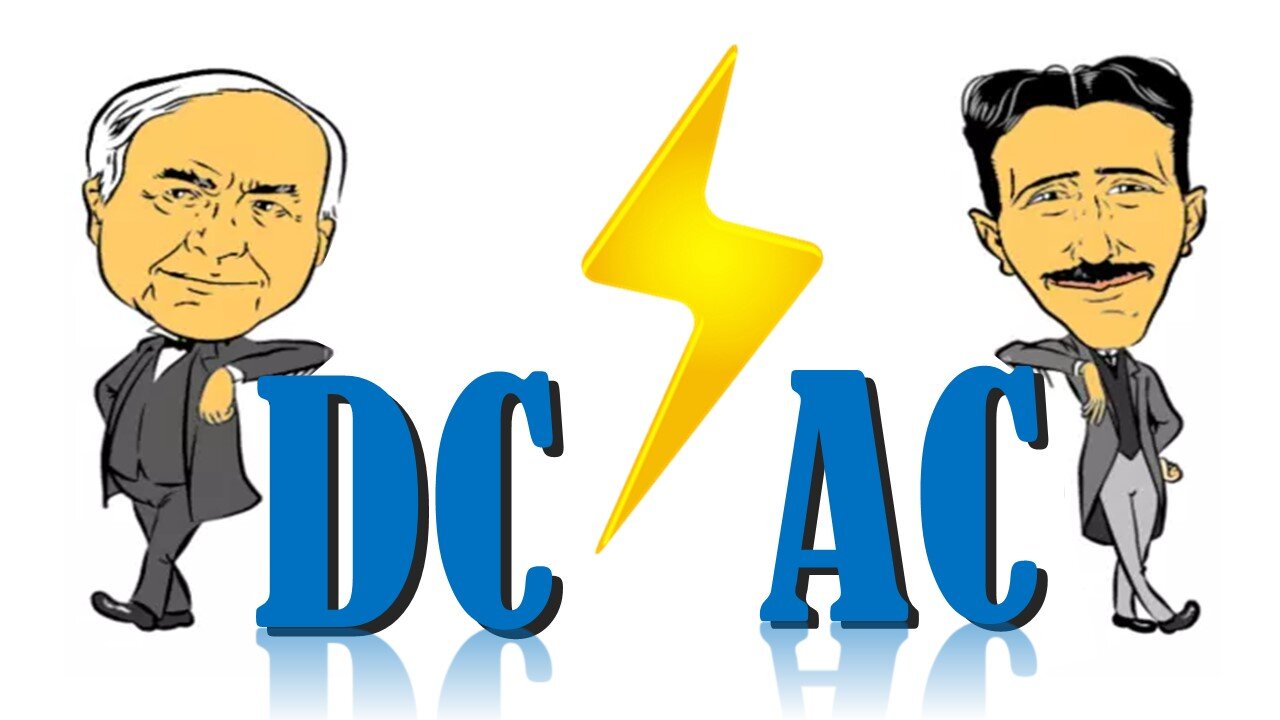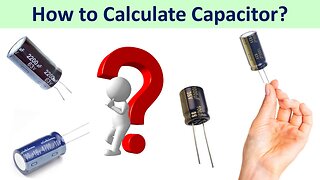Premium Only Content

What are AC and DC? Difference Between AC and DC Current Explained
Hi friends! In this video, I’m going to explain in detail the concepts of AC and DC to everyone new to learning electrical-electronic has to know. In this lesson, you will be able to find answers to many of your questions and you will have access to a lot of information about AC and DC concepts at the end of the lesson. First of all, where did the DC and AC concepts come from and discovered by whom? Let's start with that.
Thomas Edison, born in 1847, is known as the inventor of the light bulb and the direct current that he used to light the bulb. Direct current is used with the abbreviation “DC” which is the initials of direct current.
Nikola Tesla, born in 1856, is known as the inventor of alternating current. Alternating current is also used with the abbreviation AC.
Since the two inventors lived in almost the same period, DC/AC superiority struggles took place between Edison and Tesla. And this sweet scientific battle still continues today. The struggle for supremacy between Edison's Direct Current and Tesla's Alternating Current has divided people into two parts. While AC/DC struggles continue, let's look at what DC and AC are.
First of all, let’s look at how DC and AC are shown in the circuit. You can see the DC circuit symbols on the left and the AC circuit symbols on the right. AC and DC sources are commonly shown in these figures in circuit diagrams.
Well what are DC and AC measurements made with? You can see a multimeter on the left and an oscilloscope on the right. While DC measurements are usually made with a multimeter, oscilloscopes are used in AC measurements where we can see the shape of the signal on the screen.
When we measure the voltage value of DC power sources with a multimeter, we see a value whose direction does not change in time. For example, we can show the Voltage-Time graph of a 1.5V battery like this. We can show the Voltage-Time graph of a 9V battery as a constant 9V in this way. Therefore, we can say that DC is a current that does not change direction in time.
We discussed the concepts of AC and DC in this lesson and now we have come to the end. I hope it was helpful and you liked it. Hope to see you in the next lesson. Goodbye.
-
 5:24
5:24
Electrical Electronics Applications
1 year ago $0.02 earnedHow to Calculate Capacitance and Voltage Value of Capacitor?
115 -
 4:31
4:31
CoachTY
14 hours ago $8.95 earnedCOINBASE AND DESCI !!!!
38.6K7 -
 10:02
10:02
MichaelBisping
13 hours agoBISPING: "Was FURY ROBBED?!" | Oleksandr Usyk vs Tyson Fury 2 INSTANT REACTION
2.66K6 -
 8:08
8:08
Guns & Gadgets 2nd Amendment News
2 days ago16 States Join Forces To Sue Firearm Manufacturers Out of Business - 1st Target = GLOCK
55.9K51 -
 10:17
10:17
Dermatologist Dr. Dustin Portela
1 day ago $7.81 earnedOlay Cleansing Melts: Dermatologist's Honest Review
53.6K -
 1:02:20
1:02:20
Trumpet Daily
1 day ago $26.68 earnedObama’s Fake World Comes Crashing Down - Trumpet Daily | Dec. 20, 2024
35.1K34 -
 6:29
6:29
BIG NEM
21 hours agoCultivating God Mode: Ancient Taoist NoFap Practices
30.5K6 -
 30:53
30:53
Uncommon Sense In Current Times
1 day ago $7.99 earned"Pardon or Peril? How Biden’s Clemency Actions Could Backfire"
50.6K2 -
 40:01
40:01
CarlCrusher
19 hours agoSkinwalker Encounters in the Haunted Canyons of Magic Mesa - ep 4
47K2 -
 59:44
59:44
PMG
1 day ago $5.74 earned"BETRAYAL - Johnson's New Spending Bill EXPANDS COVID Plandemic Powers"
54.9K19